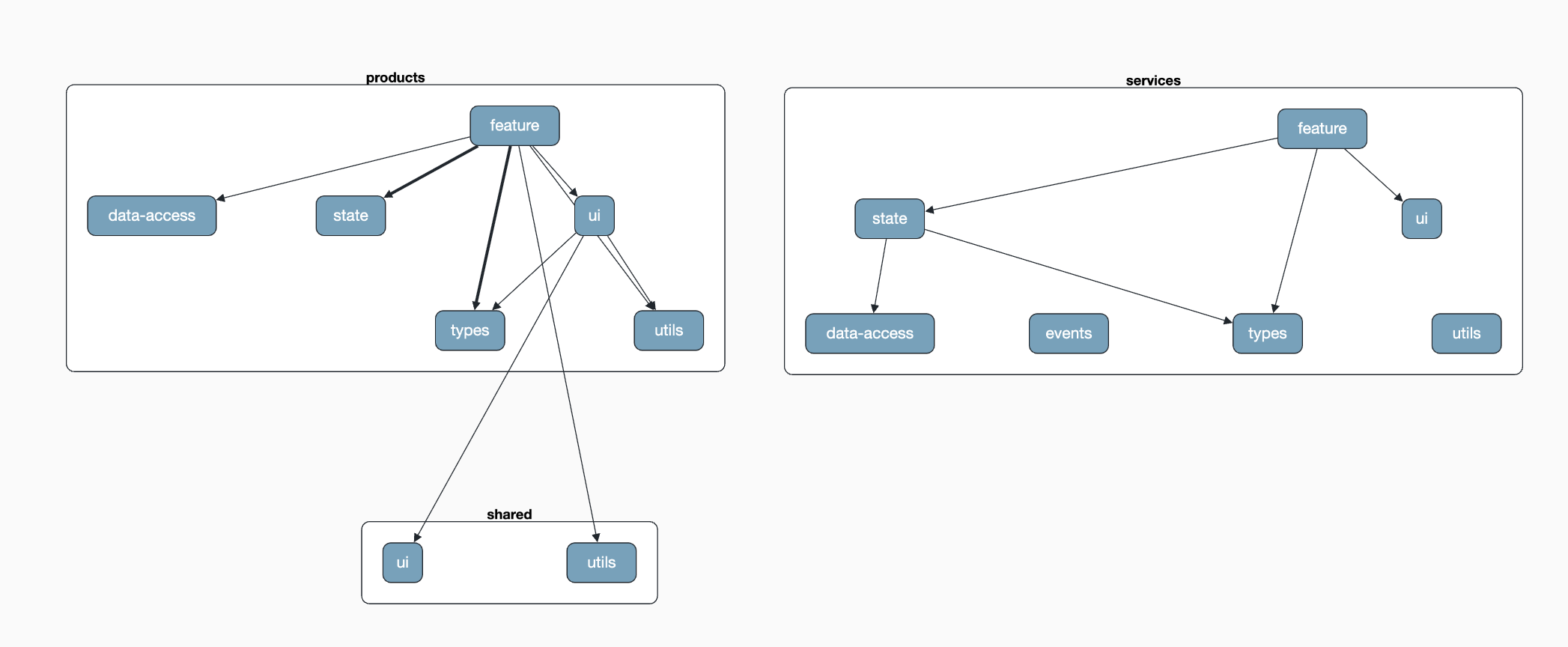
The visual impact of verticals
Introduction
Software architecture isn’t just about how code functions—it’s also about how it communicates its intent to developers. In our recent case study on vertical architecture, we explored the functional benefits of organizing applications using vertical slices rather than traditional horizontal layers. While that study demonstrated measurable improvements in maintainability, testability, and development velocity, there’s a compelling visual dimension that deserves its own spotlight.
The way we structure our code directly influences how easily developers can understand, navigate, and reason about the system. This article examines how the shift from layered to vertical architecture creates immediate visual improvements that enhance code comprehension and reduce cognitive load.
The Visual Challenge of Layered Architecture
Traditional layered architecture, while logical in theory, often creates visual complexity that hampers developer productivity. When we visualize applications structured in horizontal layers, we encounter several visual challenges:
Scattered Domain Logic
Business concepts become fragmented across multiple layers, making it difficult to trace a complete feature or use case through the codebase.
Unclear Boundaries
Layer boundaries can become blurred over time, leading to tight coupling and architectural drift that’s not immediately apparent from the code structure.
Cognitive Overload
Developers must mentally map relationships across distant parts of the codebase, increasing the mental effort required to understand how features work.
Here’s what a typical layered architecture looks like when visualized:

Notice how the interconnections create a web of dependencies that obscures the actual business domains and use cases within the application.
The Transformation: Vertical Architecture Visualization
When we restructure the same application using vertical slices, the visual improvement is immediately apparent:

The transformation reveals several key visual improvements:
Clear Domain Boundaries
Each vertical represents a distinct business capability, making it immediately obvious where specific functionality resides.
Reduced Cognitive Load
Dependencies are localized within each vertical, allowing developers to focus on one cohesive unit at a time.
Improved Discoverability
New team members can quickly identify where to implement new features or fix bugs by looking at the domain-aligned structure.
Self-Documenting Architecture
The visual organization itself serves as documentation, reducing the need for extensive architectural diagrams and explanations.
The Psychological Impact of Visual Clarity
The visual improvements of vertical architecture extend beyond mere aesthetics—they have measurable psychological benefits:
Reduced Context Switching: Developers spend less mental energy jumping between disparate parts of the codebase.
Faster Onboarding: New team members can understand the application structure more quickly when it aligns with business domains they already understand.
Improved Debugging: Issues can be traced more efficiently when the code structure mirrors the user’s mental model of the application.
Enhanced Collaboration: Business stakeholders and developers can more easily discuss features when the code structure reflects business terminology.
Practical Implementation Insights
The visual benefits of vertical architecture become most apparent when:
- Domain boundaries are clearly defined and consistently maintained
- Shared utilities are properly factored into common modules
- Cross-cutting concerns are handled through well-defined interfaces
- Module naming conventions reflect business language rather than technical concepts
Measuring the Visual Impact
While the visual improvements are often subjective, teams can measure their impact through:
- Time to locate features for new developers
- Code review efficiency improvements
- Reduced architectural questions during development
- Faster feature estimation due to clearer scope boundaries
Conclusion
The shift from layered to vertical architecture delivers benefits that extend far beyond functional improvements. The visual clarity achieved through domain-aligned structure reduces cognitive load, improves developer productivity, and creates a more maintainable codebase.
When architecture aligns with both business domains and human cognitive patterns, the result is software that’s not only better designed but also more intuitive to work with. The visual transformation from tangled layers to clear verticals represents more than just a reorganization—it’s a fundamental improvement in how we communicate intent through code structure.
Tools and Resources
The module graphs shown in this article were created using detective, an excellent visualization tool developed by Angular Architects. This tool helps teams visualize their application architecture and identify opportunities for improvement.
For teams looking to implement vertical architecture, consider starting with a single domain and gradually expanding the approach across your application. The visual benefits become more pronounced as more of your codebase adopts the vertical structure.
This article builds upon concepts explored in our comprehensive case study on vertical architecture. For implementation details and quantitative analysis, we recommend reading the full case study alongside this visual exploration.